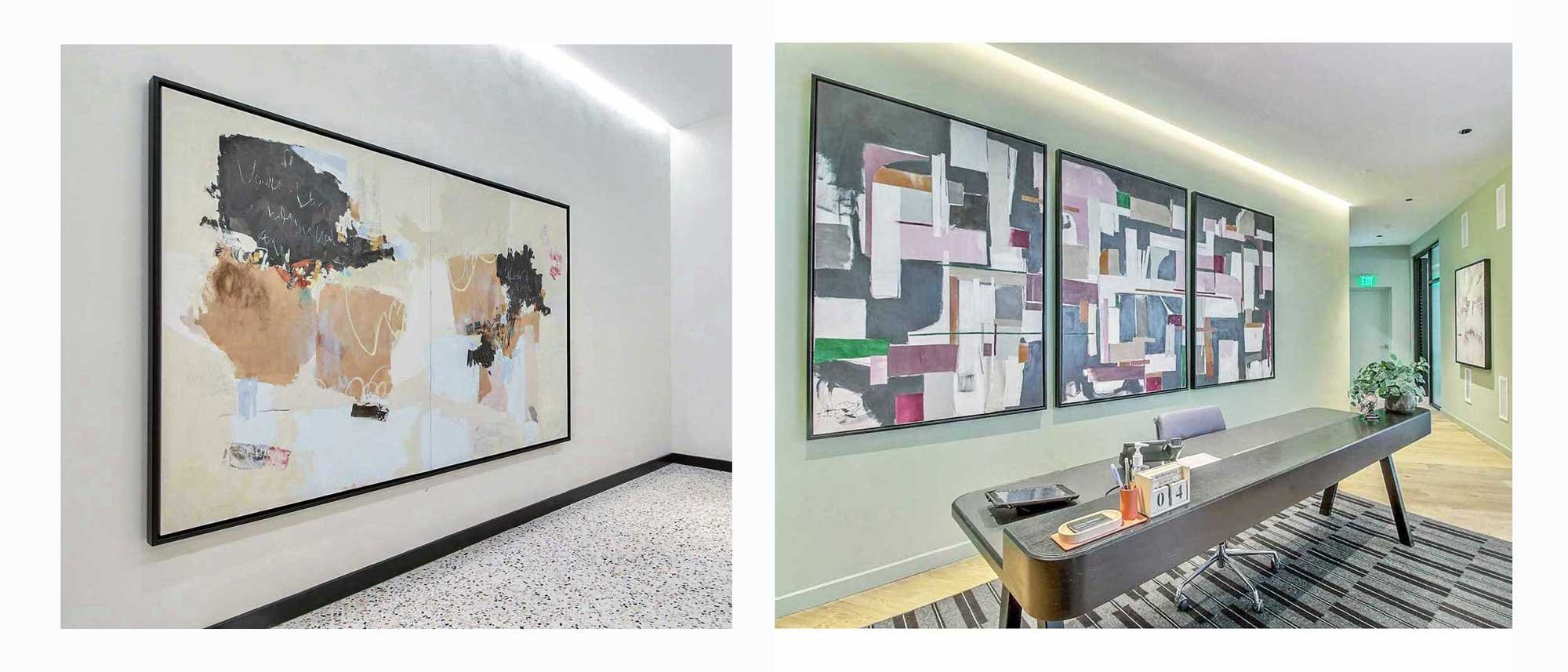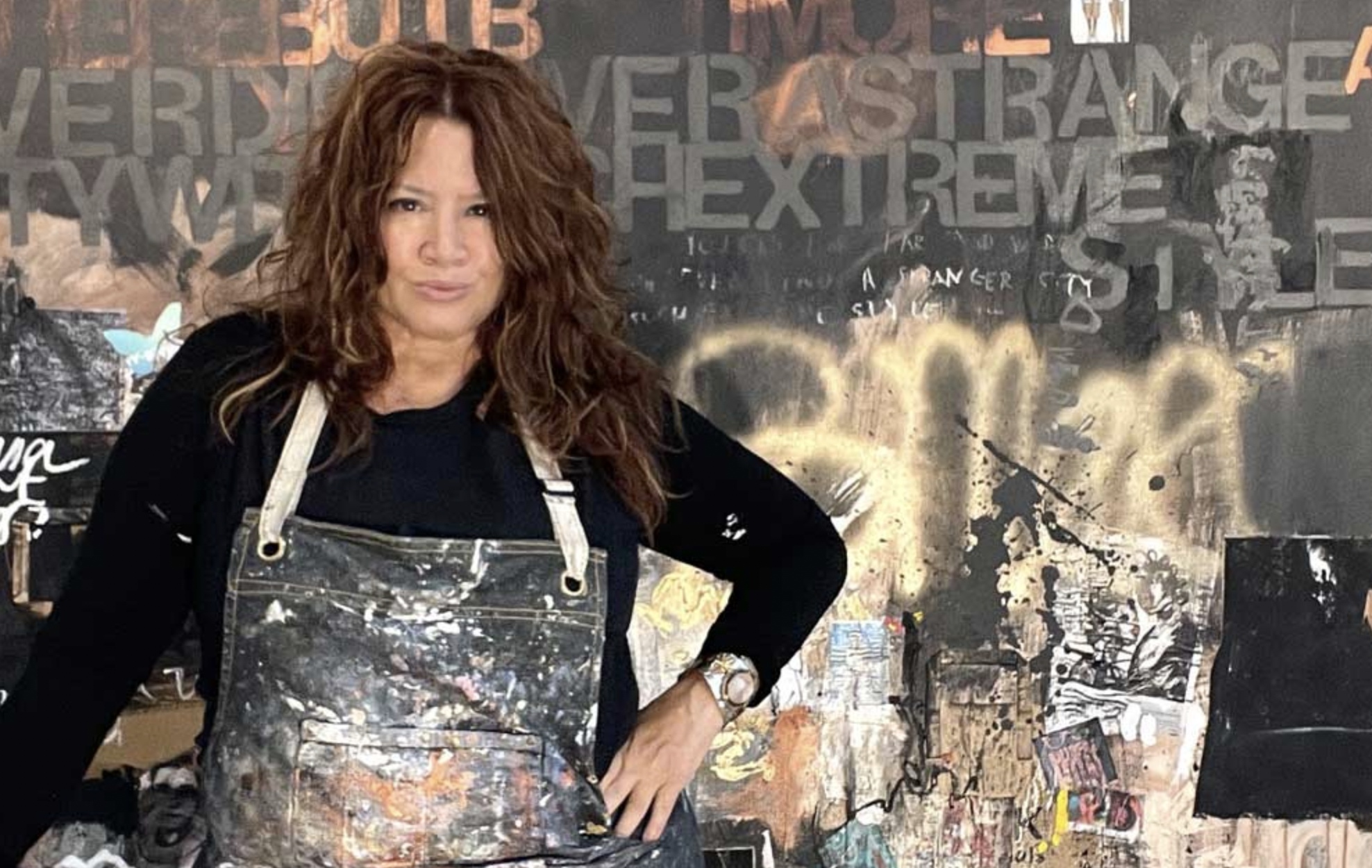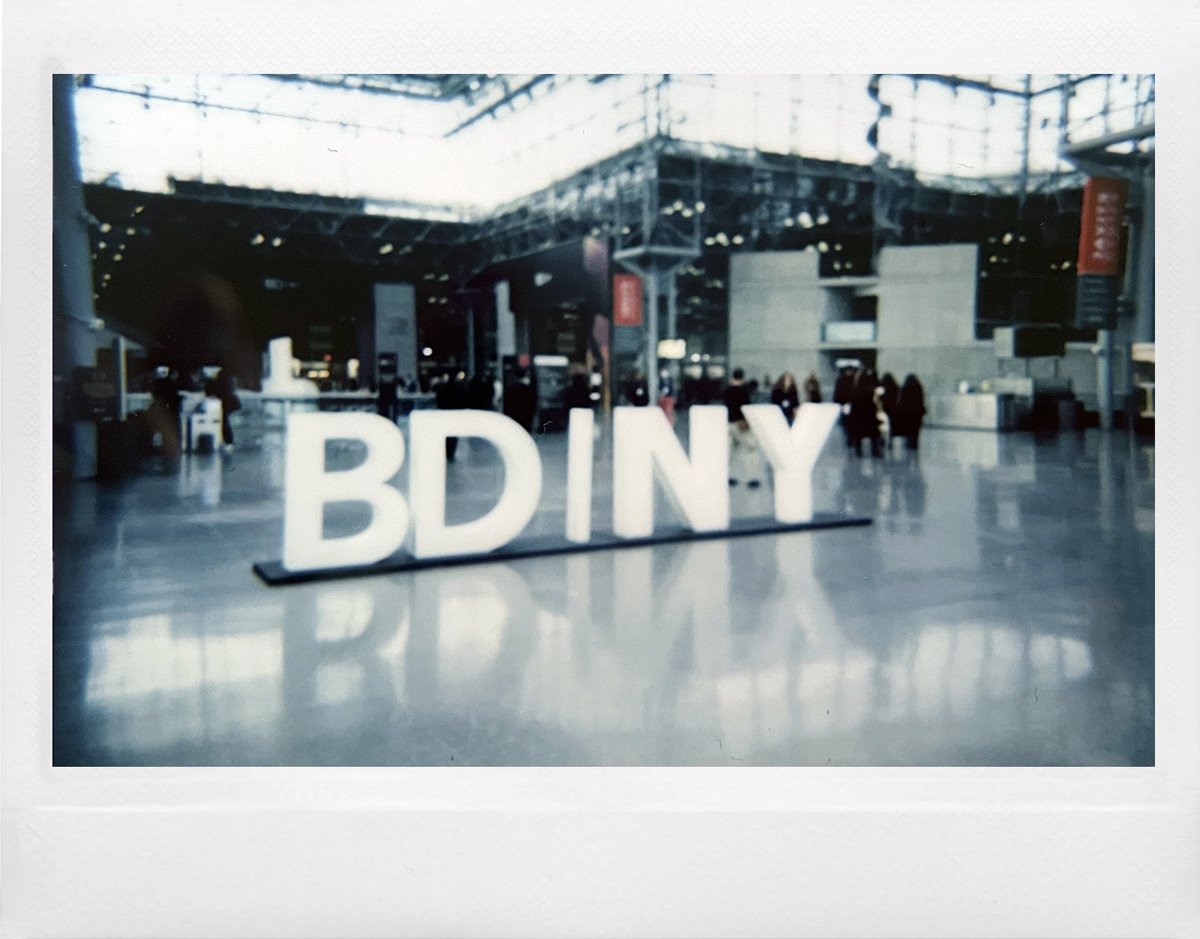Susan Washington's triptych paintings Navigator I and Navigator II installed at Turnberry Ocean Club.
Abstract artist Susan Washington talks to Indiewalls on her commission for Turnberry Ocean Club, her recent move to Baltimore, and her process in the studio.
Abstract artist Susan Washington explores the visual narratives of lived experience, memory, and place–both existent and non existent–in her large scale, gestural paintings. Recently, two of her triptych paintings were installed at Turnberry Ocean Club in Sunny Isles, FL. Titled Navigator I and Navigator II, the paintings reference Washington's ongoing Subway Sonnets series with a new spin that work in concert with this elegant multifamily property Sunny Isles, FL.
"Each triptych provides the viewer with alternative routes around objects and along edges as space constricts and expands. I've referenced both ancient cartography and tailoring as a way of understanding how two-dimensional space can be mapped and traversed. There is also a suggestion of the rising and setting of celestial bodies" said Washington. With a wide range of materiality consisting of textile, paper, paint, pencil, and glass beads, Washington's paintings indicate the presence of the moon across the water and challenge the viewer to create their own unique narratives in response.
We recently chatted with Susan about her creative vision, process and more.
How did you get your start as an artist?
I was always a creator. My dad and godmother were artists and I started learning from them when I was about five. I loved to paint and draw through high school, I designed club clothes for my friends and when we were barely 18, we would spend weekends in the East village with artist friends where I would create. I was in the fashion industry for 20 years and then decided to relocate to the Poconos, where I met my husband. He’s an artist as well and that’s when I really started to focus on my studio practice.
Who are some of your main influences? Where do you primarily draw inspiration from?
I think subconsciously there are probably lots of influences. I see art that resonated with me for some reason or another, digest it and at some point it comes out somewhere without even me realizing it. Consciously, I would say the biggest influences have been Rauschenberg because of his use of space and iconographic imagery. I love Picasso and Braque’s early cubist collages and Cy Twombly's scribbles. I love Basquiat because of our shared interest in graffiti and street art (as well as a shared era in NYC).
As far as drawing inspiration - I don't believe in this notion of having to be inspired to create. It’s not really that glamorous. It’s not like you wander across a field looking for the perfect flower and think “I'm inspired to paint now.” Inspiration comes from the outside, but when I create, it comes from within. All my experiences, especially from those days in the late 70s and early 80s in NYC, which was an important time for me, are embedded in me. It’s an internal dialogue and the art just comes. Like Picasso said “Inspiration exists, but it has to find you working”.
"I don't believe in the whole notion of having to be inspired to create...Inspiration comes from the outside, but when I create, it comes from within."

Susan Washington's paintings installed at Two South Willow in Montclair, NJ.
Photo Credit: Jeffrey Martinez
Can you tell me about some other recent projects you've worked on?
I've worked on several projects with IndieWalls, including the recently installed work for Turnberry Ocean Club in Sunny Isles, FL as well as some large oil paintings for Two South Willow in Montclair, NJ. I love when a client can identify a piece in my portfolio that they love and we use it to inspire a new painting!
You recently moved to Baltimore. Can you tell me about the art scene there?
There is a strong art scene and art presence here in Baltimore. First off we have MICA , which is an art and design college and one of the oldest art colleges in the US. We have several really good contemporary art galleries including Goya Contemporary and C. Grimaldis Gallery, to name a few. We have four designated art districts and one of them is voted one of the top ten in the country.
I see it as a good market for art because of the development that is going on in Baltimore as well as its close proximity to Washington DC. It's an inclusive environment, and artists are respected and appreciated here. There are A LOT of amazing creators here.
Can you tell us about your process from start to finish? Do you traditionally sketch out ideas or dive right into new paintings?
If I'm doing a commission I will usually sketch it out digitally, and then I jump right in. I stretch and gesso all my own canvases. For my current series of work I usually paint the entire canvas with a metallic paint. All these works are drawn from memory of growing up in the city in the early 80s with graffiti and mark-making on surfaces like trains and rolling aluminum shutters. While that drys I edit photographs I have saved in photoshop, alter colors and transparencies and print out on acid free tissue paper or cotton rag. These get posted like bills to the surface, I paint over this to knock things back and repeat a process in a different order. It’s about the surface and if you see any surfaces from that time you know what I am talking about - it’s one thing on top of another, things are cancelled out.
I try to approach the canvas as a different person each time. I put down a set of marks, the same way dozens of graffiti artists may have back in the day defacing a train or doorway. It’s this surface that interests me and this seemingly random act of mark-making (that’s not always random). I then use heavy thick oil paints on top of that. And this process continues over the course of weeks and months

Susan at work in her Baltimore studio.
Can you describe a typical day at the studio?
A typical day starts early and usually with computer work. I admit I would rather be painting all day but I have to do things that are just as important like communicate with collectors that I am working on new pieces for, connect with other artists, especially that I am working on the new mentorship program I am developing here. I spend time creating content for social media, editing photos, editing and optimizing my website - all the non-art related stuff takes up the first few hours of the day. The rest of the day until about 6 pm is physically working. It’s when I mostly shut out the rest of the world and become very immersed in what I am doing. I will put together stretcher bars, prepare surfaces, mix paints and create. My work looks like it's done fast and it is at the beginning but as the painting progresses it gets slower and slower as I think more on marks and I can sit for hours just looking at the canvas before making a mark.
Do you listen to music while you work, and if so, what kind of music makes you feel the most inspired?
I always have music on in the studio. Music is a driving force to my work. I don't think there is any specific genre that “inspires” me though. I do see a difference in the work though depending on what I am listening to. I listen to all sorts of things- Ibiza house, glam rock, trip hop, reggae, classical. I listen to old school Mudd club and R&B but also Marilyn Manson and rap - I love Nina Simone & Motown. I won’t lie I have a Studio 54, hardcore punk and new wave playlists too!
Check out the project galleries for Turnberry Ocean Club and Two South Willow where Susan's art appears.




